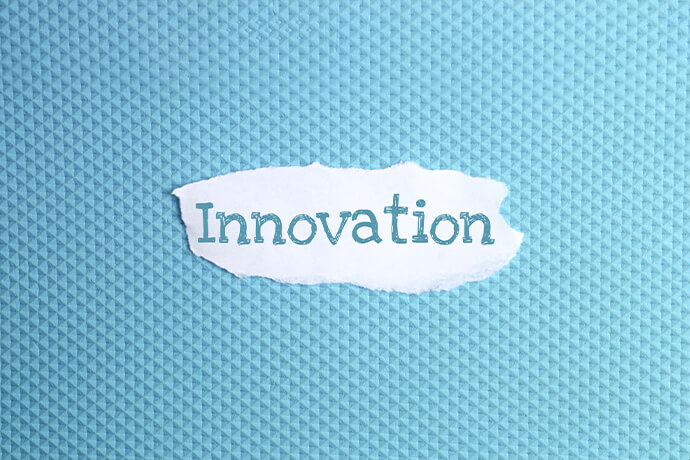 SPEAKERS
SPEAKERS
 TOPICS
TOPICS
Mastering innovation is no longer an option; it's a necessity for business survival. Embrace change, harness creativity, and stay ahead in today's dynamic landscape.

Innovation is the key to survival in today's super-dynamic business environment. Without the ability to innovate, companies risk being left behind in an era in which consumer demands, technological developments and market influences are constantly changing. But, innovation requires more than installing new technologies alone; it requires a cultural transformation aiming at developing and experimenting with new ideas.
This article is for you to teach the core of innovation in business, discussing its meaning, processes, and far-reaching influence on organizational culture and practices.
Meaning of innovation in businesses is all about developing and applying new, helpful, and effective ideas, products, services, and approaches that create major changes or improvements. It means creativity, problem-solving, and the readiness to go against the norms with the intention of inspiring change and having an edge over competitors.
Innovation is not limited to technological breakthroughs, it includes changes in the process, business models, and customer-centric approaches. It's about ceaselessly looking for opportunities, predicting the future direction of the market, as well as adapting to the changing demands of our customers. Basically, innovation is what fuels business growth and makes it unique and sustainable among many competitors.
Innovation in business is not a standardized notion but a compilation of various models that organizations can pursue to boost creativity in the workplace and growth. The awareness of these models is important for company leaders who strive to stimulate innovation in their operations. Let's check some of the key models of innovation in business:
The basic linear model of innovation, also known as the technology-push model, starts with research and development (R&D) and ends with the product's market commercialization. It is based on the assumption that innovation follows scientific discoveries or technological breakthroughs. Organizations focus on the innovation of products or technologies by going through diligent R&D, after which the new creation can be brought to market using different phases of prototyping, testing, and production.
By contrast, the concept of incremental innovation pertains to creating small but important innovations that are ultimately revolutionary by allowing for iterations over a product, service, or process. Rather than driving for a head-on revolution in core structure and process, companies opt for steady enhancements to efficiency, quality, or features. Steady innovation often has a lower level of risk and is easier to manage than disruption innovation, being a more favorable choice among companies seeking to stay competitive.
Disruptive innovation involves the creation of a new product, process or business model that significantly alters the way an industry is structured. In contrast to incremental innovation, the latter of which is designed to enhance the current prevailing systems, disruptive innovation is a game changer that either removes the market entirely or establishes a new market niche.
Netflix is an example of disruption, a company that started streaming services, causing a change in the home entertainment industry, and Airbnb, which created an online marketplace for hospitality, thus transforming the whole sector.
Open innovation is an innovative approach that relies on collaboration with external sources that can generate innovative ideas, technologies and expertise. Rather than concentrating on in-house R&D activities, industrial players connect with external parties such as customers, suppliers, universities, and research organizations with the aim of jointly generating value. Open innovation facilitates the companies to explore a wider range of new ideas and resources, making the rate of innovation much faster than ever before and the development costs a lot lower.
Design thinking has a human focus and thus directs the innovation process toward empathy, creativity, and trial and error. Founded on the principles of customer-centric design, design thinking entails understanding the tastes and interests of the end-users, creating the possible solutions for these models and testing them, as well as implementing the feedback. Design thinking methodology promotes cross-functionality and bias toward action, allowing businesses to perceive and, if necessary, you should ease the quick recognition and solution to customer demands, thus giving the organizations a competitive advantage.
Business model innovation, unlike others, is a model that reinvents the way a company fulfills, satisfies, and retains value. Instead of emphasizing product or technology innovation only, organizations implement additional revenue channels, engagement models, or ways to deliver value to customers that differentiate them from peers. These could be growing through subscription-based billing, making business associations, or using digital platforms for more reachable markets.
Business model innovation may be characterized as being very disruptive since it not only contests traditional industry operations but also the way things are supposedly done.

Innovation serves as the main catalyst for business survival and growth. It's all about being able to constantly challenge the existing order, create new options, and search for ingenious solutions to the existing issues. Here are several innovation ideas for business that can spark growth, enhance competitiveness, and drive positive change:

Whether you're a startup or a seasoned business, the choice is no longer whether you are to innovate or not, but how much you are to innovate. Here's why innovation is important for businesses:
Innovation in business isn’t a destination, it is a journey—a journey of constantly discovering new concepts, methods, and opportunities. By adapting and allowing for innovation, businesses can face change head-on, which will result in success in a competitive and risky market. From incremental changes to disruptive innovation, innovation is the main thing that unlocks growth, improves competitiveness, and shapes the business world. The impact of innovation speakers can further ignite this culture of innovation, inspiring organizations to push boundaries and embrace change.